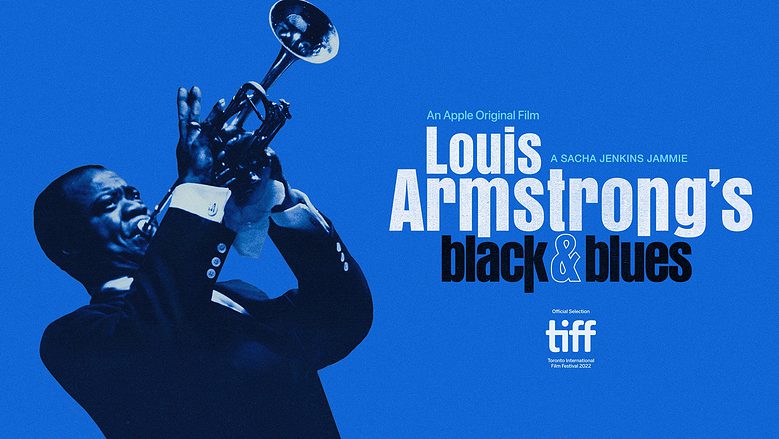 New Apple TV+ documentary Louis Armstrong’s Black & Blues takes a lively and appropriately soulful look at the man who invented popular music in America as we know it today.
New Apple TV+ documentary Louis Armstrong’s Black & Blues takes a lively and appropriately soulful look at the man who invented popular music in America as we know it today.
The film, which premieres today on Apple’s streaming service, brims with expert testimony from witnesses, fans, friends, and family of the incredibly influential jazz musician. It’s bolstered by a cornucopia of rare archival footage and photographs that root Armstrong firmly in history.
Louis Armstrong is too big a subject to think you could ever fully capture him, so director Sacha Jenkins treats this project as just one man’s look at another man. It’s remarkably successful.
Louis Armstrong’s Black & Blues review
Louis Armstrong is a force so broad, an influence so pervasive, a man so monumental that to even think about summing him up … it’s absurd. It’s like making a documentary about the Pacific Ocean. How the hell do you even start?
Louis Armstrong was music. He was synonymous with jazz. He was the preeminent live performer in America, who found fame internationally singing the definitive versions of a hundred standards and originals.
How do you start to talk about the Pacific Ocean? Director Sacha Jenkins does the logical thing: He just dives in. We meet Armstrong suspended in the continuity of time, old and young, writing about his own life (passages of which are read by rapper Nas), talking about it in interviews, and living it. His show business career is related in impressionistic snatches, and the footage we have of him is always impressive.
Louis Armstrong: From humble beginnings in New Orleans
Armstrong came from nothing, delivering buckets of coal for a meager living in New Orleans before getting into music as a way to express himself. He was arrested young and sent to an orphanage, where he first discovered the trumpet. (It’s something of a miraculous feat that Armstrong was so beloved in racist America that much work was done while he was alive and famous to track down the men and women who ran the boy’s orphanage where he spent his adolescence and interview them or put them on TV to talk about what he was like as a boy.)
Armstrong started playing for Joseph “King” Oliver, the New Orleans band leader who took him under his wing and imported him up to Chicago.
We hear from Armstrong’s late wife Lil Hardin and Jelly Roll Morton (among others) from beyond the grave. And we hear from Archie Shepp, Wynton Marsalis (which … who cares, but I get that you can’t make a high-profile Jazz doc without calling him and letting him have his say), jazz historians Dan Morgenstern and Ricky Riccardi speak from this mortal coil.
Morgenstern, 92, tells the story of hearing Armstrong play “The Star Spangled Banner” with James Baldwin (later a critic of Armstrong), who leaned over afterward and said, “That’s the first time I liked that song.”
My mother taught me ‘enjoy the rudimentals!’
Armstrong gets a reputation around Chicago for his improvisation and his penchant for playing much higher notes than are customary in jazz. Before long, he becomes a sensation. He starts his own band, Louis Armstrong’s Hot Five, and is credited with both the invention of jazz scatting and being the first important jazz soloist.
His singing voice (that beautiful deep, smoky baritone) could not be out of tune; his singing became as famous as his trumpet playing. He became a film star and a frequent TV guest. And in 1932, he traveled to Europe for the first time, right around when he discovered his manager was stealing from him. (He fired him and hired Joe Glaser in his place.)
Armstrong went on to become the first Black musician to crack the racist policies of hotels and clubs. He would only play places he could stay at and enjoy himself (and perhaps even more crucially, use their bathrooms). Artie Shaw told a story about seeing him play in Los Angeles and having to go back to his dressing room to say congratulations because Armstrong wasn’t allowed to drink in the club he’d just played. This was an unfortunately common set of circumstances for the best and best-known performers in America.
The Louis Armstrong documentary we need

Image: Apple TV+
Sacha Jenkins hasn’t been around long as a director but already is someone worth trusting and following. The first film of his I saw was Burn Motherfucker, Burn!, one of five documentaries about the LA riots released in 2017 (They’ve already got a series with John Ridley, so if Apple TV+ hires Tom Jennings, One9, Erik Parker, and Ezra Edelman, they’ll have worked with all of the LA Riots doc directors – they should do this).
Jenkins has a good head on his shoulders for form and content. In Louis Armstrong’s Black & Blues, he lets his wealth of footage do the walking and talking. But when called upon to add his own, he does so unobtrusively and in a way that makes rhythmic and tonal sense. For instance, footage of a tape player spinning is thoroughly thought through (Ed Lachman, who’s never made a bad image, shot the new footage). The additional footage, like collages that translate audio interviews with Armstrong, injects something of the way that the artist’s music moves and feels into the film.
Jenkins previously made documentaries about the Wu-Tang Clan, Rick James and Nas, so Armstrong makes sense, even if it’s a rather larger and more remote topic. (Armstrong’s been dead for decades, after all.) His treatment here does indeed have the approach of a jazz performance. Jenkins takes Armstrong’s life and gives it his spin (as he did in his L.A. Riots movie, which he had to know would have competition), knowing someone else can come along and do their version later.
Rare audio reveals the unvarnished Louis Armstrong
Jenkins’ secret weapon is all the unearthed audio of Armstrong frankly discussing racism, his career, and more. I had never heard Armstrong speak so candidly. (It’s a joy to hear him say “cocksucker” and “motherfucker.” The strong language earned the film its R rating.)
It’s just fantastic to get the unsanitized version of Armstrong after years of only knowing him as the smiling performer. That persona got him in trouble with a lot of his Black audience, which the film covers without fear or holding back, in a way even more bracing than Sidney, the last Apple TV+ doc about a black artist.
Not that Armstrong ever complied with the sanitization, but that’s exactly the problem. The entertainment industry in America had no room for a man’s real personality, least of all a Black man. Getting it back in such a beautiful form as this film is a gift.
Watch Louis Armstrong: Black & Blues on Apple TV+
Louis Armstrong: Black & Blues premieres on Apple TV+ on Friday, October 28.
★★★★☆
Rated: R
Watch on: Apple TV+
Scout Tafoya is a film and TV critic, director and creator of the long-running video essay series The Unloved for RogerEbert.com. He has written for The Village Voice, Film Comment, The Los Angeles Review of Books and Nylon Magazine. He is the director of 25 feature films, and the author of more than 300 video essays, which can be found at Patreon.com/honorszombie.
![Louis Armstong’s Black & Blues takes a bold look at a jazz legend [Apple TV+ review] Louis Armstrong’s 'Black & Blues' review: A wealth of archival footage gives us a rare portrait of jazz legend Louis Armstrong.](https://www.cultofmac.com/wp-content/uploads/2022/10/Louis-Armstrong-hero-1-1336x1536.jpg)

